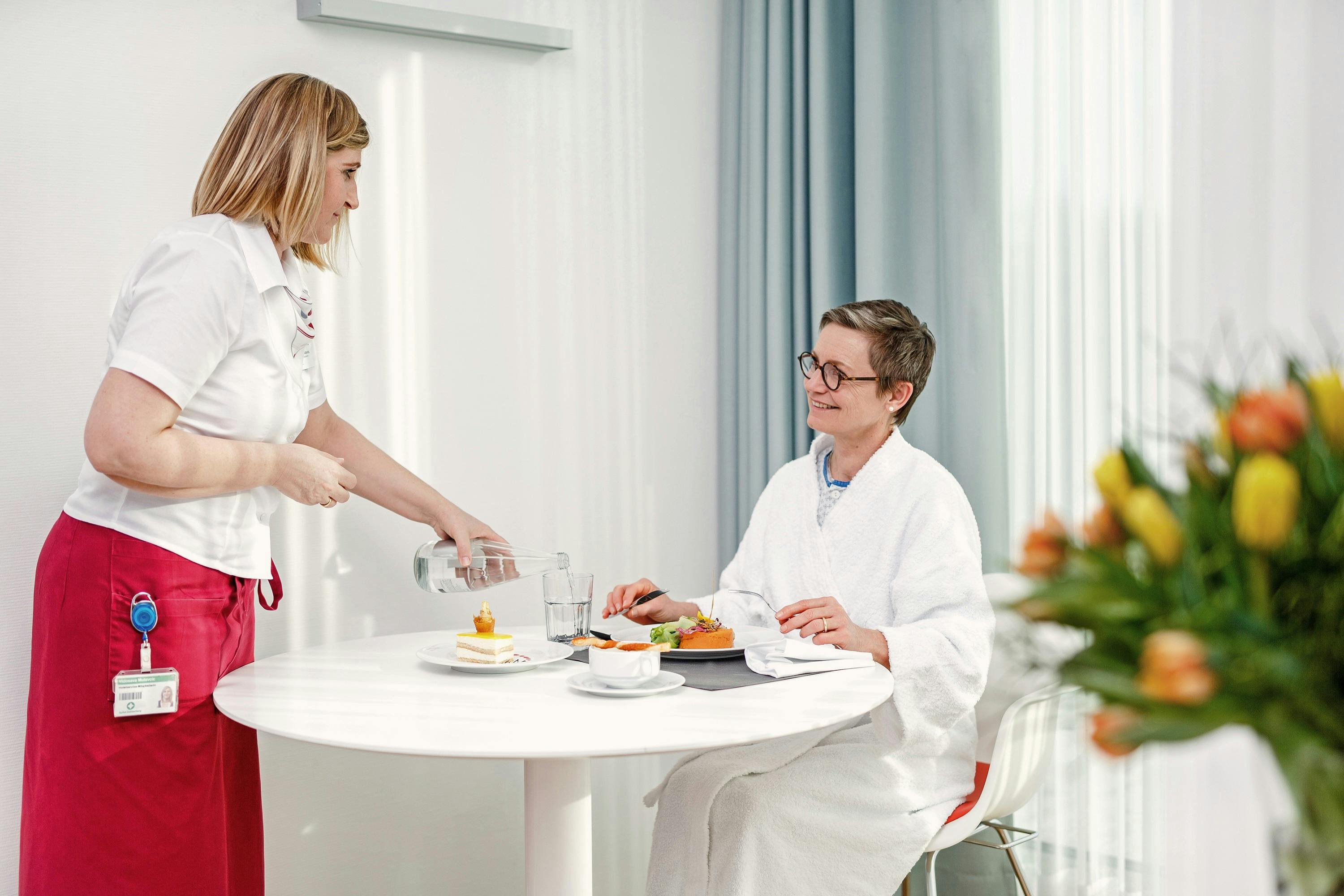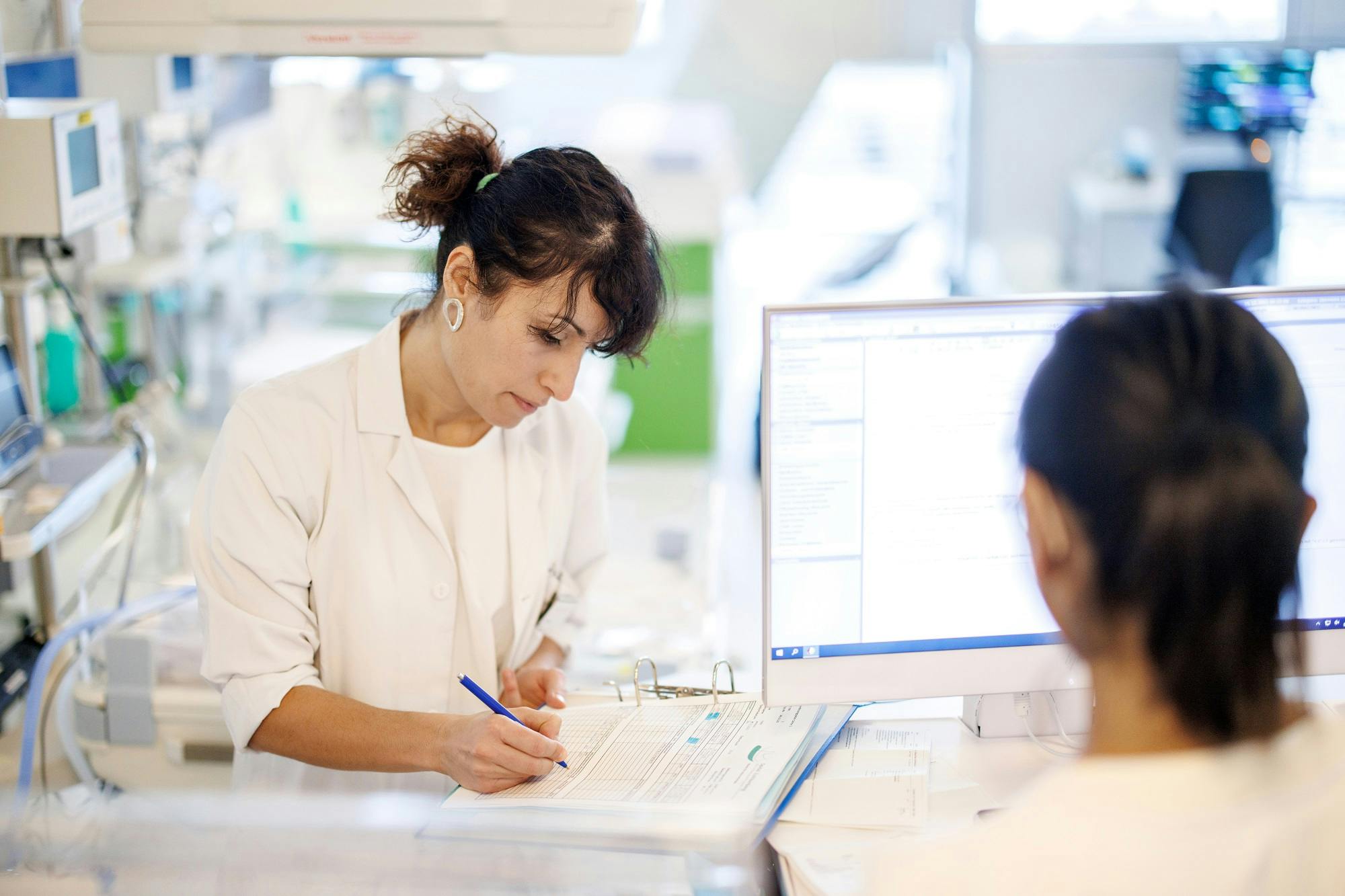The menopause from the perspective of conventional medicine
Dr. med. Helene Bamert-Stoop
July 11, 2023
4 min
Dr Bamert-Stoop, in brief, what happens to the female hormones during the menopause?
The ovary, the main production site of oestrogen and the corpus luteum hormone, ages and produces less and less corpus luteum hormone and, in the course of time, less and less oestrogen. With the menopause, the ovary largely stops working. This decline occurs over a period of years, sometimes fluctuating, sometimes rapidly. Women notice the hormone imbalance and also the hormone deficiency in the form of menopausal symptoms.
What are the causes of symptoms such as hot flushes, urogenital dryness and cycle disorders during the menopause?
Hot flushes are mainly caused by a lack of oestrogen, which temporarily throws the body's thermoregulation out of balance. Urogenital dryness is also due to oestrogen deficiency: The skin becomes thinner, more sensitive, loses elasticity and the muscles of the pelvic floor and urethra also break down somewhat.
What are the advantages and disadvantages of hormone replacement therapy?
The advantages are that hormone replacement therapy has been proven to help reduce symptoms. Patients feel more comfortable in their bodies again. Oestrogen also has a positive effect on bone health and blood vessels. Depending on the patient, however, the risk factors must also be carefully analysed and weighed up, as even healthy patients have a small risk of breast and uterine cancer and thrombosis.
What types of hormone replacement therapy are available?
Oestrogen is available as a gel or patch for whole-body therapy, or only as a vaginal gel or suppository for purely vaginal use. The luteal hormone can be swallowed as capsules or used vaginally. There are also tablets and patches that contain a combination of both hormones. Each patient can receive individualised advice and treatment.
How are hormone replacement therapies usually used?
If the uterus is no longer present, oestrogen alone will be used. If the patient still has a uterus, a combination with a corpus luteum hormone is mandatory. Depending on the preparation, oestradiol is used daily or twice a week. The corpus luteum hormone can also be administered in the form of a hormone coil for 5 years.
0/0
Weitere Beiträge
Counsellor
Understanding panic attacks: What triggers them and how to counter them
Panic attacks are like sudden storms in the soul - they strike unexpectedly, unleashing a wave of intense fear and often leaving confusion and uncertainty in their wake. But what exactly is a panic attack, how are they diagnosed and treated, and what can sufferers do to deal with them? To delve deeper into this topic, we spoke to Dr Ruedi Schweizer, Medical Director of our Centre for Mental Health.
Counsellor
Can psycho-oncological support improve the chances of recovery or the quality of life of breast cancer patients?
In psycho-oncological topics, you and your relatives will be accompanied through all phases of the illness by experienced psychologists specialising in psychotherapy and specialists in psychiatry and psychotherapy. In this way, we can provide relief, give courage and open up new perspectives. Dr Ruedi Schweizer, our expert in psycho-oncology and Medical Director of the Centre for Mental Health, explains in the following video.
Counsellor
Focus on women's health: An interview with Dr Julia Graf, specialist in gynaecology and obstetrics
On International Women's Day, we would like to focus on women's health. To this end, we met with Dr Julia Graf, an experienced specialist in gynaecology and obstetrics and senior physician at the Women's Clinic, to talk about various aspects of women's health.


